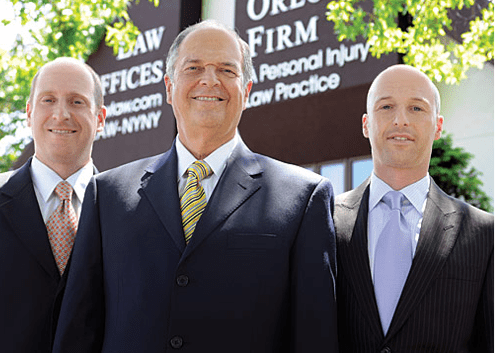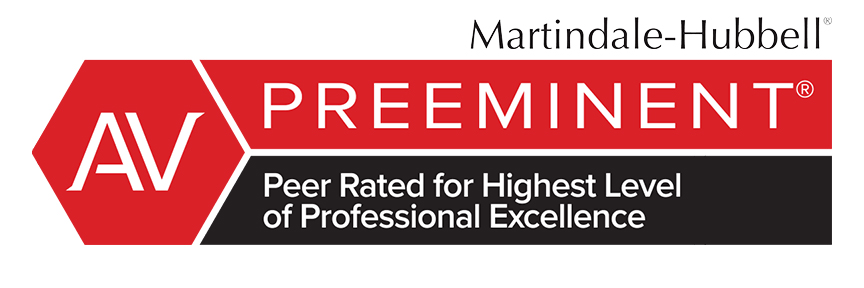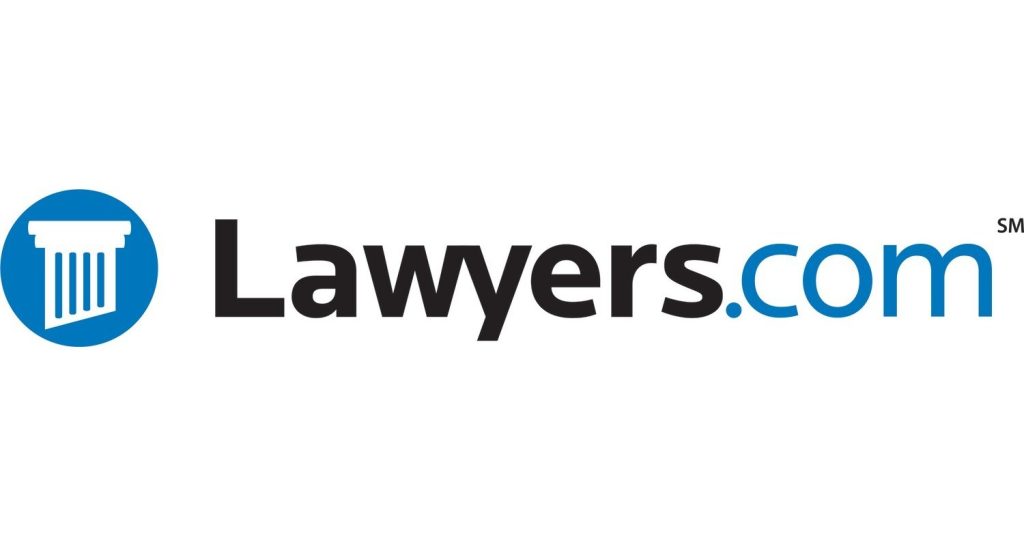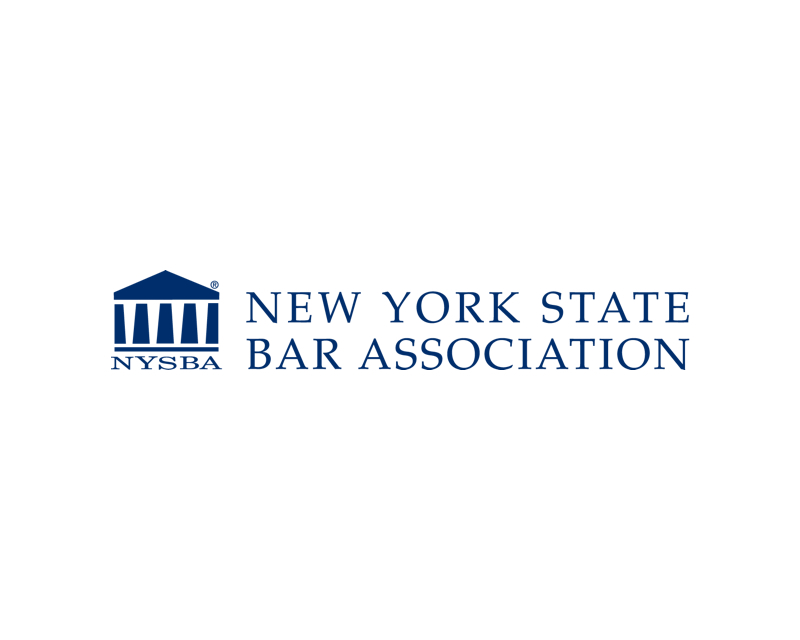New York City Lead Poisoning Statistics can be confusing. New York City has made enormous progress in reducing lead poisoning, but lead exposure remains a serious public health challenge. This blog post compiles the most recent statistics on lead poisoning in NYC and traces historical trends. We’ll break down data by children vs. adults, highlight disparities across racial/ethnic groups and income levels, and examine differences by borough and neighborhood. We also review inspection and abatement efforts (including housing violations and enforcement) and explain the legal context – from NYC’s lead paint laws to notable lawsuits. Our New York City Lead Poisoning Lawyer‘s goal is to present a comprehensive, accessible overview of NYC’s lead poisoning situation.
A Historical Overview of Lead Poisoning in NYC
NYC’s decline in lead poisoning cases is a public health success story. In the mid-1990s, the city saw over 20,000 children each year diagnosed with elevated blood lead levels. For example, in 1995 more than 21,000 children were newly identified with blood lead levels ≥10 µg/dL. Since then, cases have plummeted by over 90%. By 2005, the number of new childhood lead poisoning cases (using the ≥10 µg/dL definition) fell to roughly 3,200, and by 2009 it was about 1,634. That represents a 92% decline from 1995 to 2009. The downward trend has continued into the 2010s and 2020s.
![New York City Lead Poisoning Statistics [2025] 1 new nyc childhood lead poisoning cases orlowlaw.com](https://orlowlaw.com/wp-content/uploads/2025/03/new-nyc-childhood-lead-poisoning-cases-orlowlaw.com_-1024x490.png) Figure 1: New cases of childhood lead poisoning in NYC (ages 0-17 with blood lead ≥10 µg/dL) dropped dramatically from the mid-1990s to 2009. NYC went from over 20,000 lead-poisoned children annually in 1995 to under 2,000 by 2009.
Figure 1: New cases of childhood lead poisoning in NYC (ages 0-17 with blood lead ≥10 µg/dL) dropped dramatically from the mid-1990s to 2009. NYC went from over 20,000 lead-poisoned children annually in 1995 to under 2,000 by 2009.Today’s surveillance defines “elevated” blood lead at even lower thresholds, reflecting growing evidence that no amount of lead is truly safe. The CDC’s reference level was 10 µg/dL in the 1990s, then 5 µg/dL for much of the 2010s, and recently lowered to 3.5 µg/dL. Even using these stricter criteria, NYC’s progress is clear. In 2005, approximately 68,000 children under age 6 in NYC had blood lead levels that would today be considered elevated (≥3.5 µg/dL). By 2023, that figure had fallen to just 5,078 children under 6 – a 93% decline since 2005. In fact, the number of young children with elevated lead in NYC has hit historic lows in recent years. 2023 saw virtually the same number of cases as 2022, indicating a plateau, but still represented a tiny fraction of the cases seen a generation ago. Public health officials caution that pandemic disruptions (like reduced pediatric visits for testing) mean 2020–2023 data should be interpreted carefully, but the long-term trajectory is undeniably downward.
In summary, NYC has reduced childhood lead poisoning by over 90% in the past few decades – a major achievement credited to aggressive prevention policies and the phase-out of lead in paint and gasoline. However, thousands of children are still affected, and the city has not yet reached its goal of eliminating lead poisoning entirely. The following sections dive into who is still at risk and why.
Who Is Most Affected? Children, Adults, and At-Risk Populations
Lead poisoning can affect anyone, but young children are by far at the greatest risk. Toddlers and preschoolers are vulnerable because they frequently put their hands and toys in their mouths, ingesting lead dust from contaminated environments. In NYC, children under age 6 consistently account for the majority of lead poisoning cases. For instance, in 2023 there were 5,078 children under 6 with elevated blood lead (≥3.5 µg/dL), whereas the total including older kids up to 18 was only modestly higher. Infants, 1-year-olds, and 2-year-olds are often most impacted because lead screening is mandated at ages 1 and 2, and these ages coincide with crawling and teething behaviors that increase exposure.
Adults in NYC rarely get “lead poisoning” in the classical sense, but they are not immune to lead exposure. Each year a few hundred adults are reported with elevated blood lead levels (usually through workplace testing). In 2009, for example, around 749 NYC adults had blood lead levels ≥10 µg/dL. The most common source was occupational exposure – construction and renovation work that disturbs old lead paint is a major culprit. Other adult exposures come from industrial jobs (metal work, manufacturing with leaded components) or hobbies like shooting at firing ranges, stained-glass making, or using leaded pottery glazes. The good news is that adult lead levels have also declined over time (the average NYC adult’s blood lead dropped from about 1.79 µg/dL in 2004 to 1.13 µg/dL by 2014). However, pregnant women with elevated lead remain a concern, since lead can transfer to the fetus. In 2023, NYC identified 424 individuals who were pregnant or could become pregnant with elevated lead (≥5 µg/dL); notably, 84% of those with known data were foreign-born, often indicating exposure from countries with ongoing lead hazards (such as traditional cosmetics, spices, or ceramics containing lead).
Lead poisoning in NYC disproportionately affects certain racial, ethnic, and income groups. The burden falls heaviest on communities of color and low-income households. According to the NYC Health Department, a whopping 85% of NYC children under age 6 newly diagnosed with elevated blood lead in 2023 were African American, Latino, or Asian. This imbalance has persisted for decades – as far back as 2005, about 89% of lead-poisoned children in NYC were Black, Hispanic, or Asian. The reasons are environmental, not genetic: these groups are more likely to live in older, poorly maintained housing where lead paint remains, or to use imported products that contain lead. Poverty is a major factor as well. In 2023, 87% of young children with elevated lead levels resided in moderate- to high-poverty neighborhoods. The rate of lead poisoning in high-poverty areas was about 24 per 1,000 children tested, compared to 15 per 1,000 in the wealthiest NYC neighborhoods. In other words, children in poorer parts of the city face lead exposure rates roughly 50% higher than those in well-off areas. These disparities reflect historical inequities in housing quality, enforcement of code violations, and access to preventive resources.
Renters living in older private housing are another at-risk population. New York City’s housing stock is old – the majority of NYC homes were built before lead paint was banned in 1960. But not all old buildings pose equal risk. A key distinction is between public housing and private housing. Surprising to some, children living in NYCHA (public housing) now have lower lead poisoning rates on average than children in private rentals. In 2023, the rate of elevated lead levels among kids under 6 in NYCHA housing was 14.3 per 1,000 tested – about 35% lower than the citywide rate. Only 178 young children in NYCHA tested high for lead in 2023, an 82% decline from years past. This reflects intensive abatement efforts in public housing in recent years (more on that in a moment). By contrast, the vast majority of lead-poisoned children in NYC live in private rental housing, often in older apartment buildings where lead paint may still be present in peeling plaster, old windows, and dusty radiators. Renters in these units rely on landlords to comply with lead safety laws – when owners neglect maintenance, children are put in danger. Even owner-occupied homes can have lead risks (for example, some families in gentrifying brownstone neighborhoods have discovered lead dust during renovations), but renters have less control to fix hazards on their own.
New York City Lead Poisoning Statistics – Borough and Neighborhood Breakdown of Lead Risks
![New York City Lead Poisoning Statistics [2025] 2 lead poisoning borough trends orlow firm 2025](https://orlowlaw.com/wp-content/uploads/2025/03/lead_poisoning_borough_trends-orlow-firm-2025-1024x614.png)
At a more granular level, certain neighborhoods have been identified as lead hot-spots. Data compiled by the NYC Health Department in 2020 highlighted Borough Park and Greenpoint – both in Brooklyn – as neighborhoods with the highest concentration of children under six with elevated lead levels. Borough Park’s risk is tied to its many young children living in older housing (it’s a community with a large number of pre-1960 homes and a high birth rate), while Greenpoint’s risk stems from legacy industrial pollution and old housing stock. Williamsburg, Brooklyn was also flagged: around 4% of young children in South Williamsburg had blood lead levels above 5 µg/dL, compared to about 1.3% citywide. This threefold higher prevalence in parts of Williamsburg reflects a “perfect storm” of risk factors – many families with young kids, lots of aging housing (including former industrial buildings converted to residences), and lingering lead in soil and the environment. Other high-risk areas identified in past analyses include certain sections of the Bronx (like Mott Haven/Melrose and Fordham), and northern Manhattan (e.g. old tenements in Harlem and Washington Heights). Even some affluent areas have seen issues – for example, the Upper West Side had a cluster of buildings where renovation dust caused elevated lead in kids. Overall, though, lead poisoning in NYC today is highly correlated with poverty and older housing, which means neighborhoods in the South Bronx, central Brooklyn, and parts of Queens tend to bear the greatest burden.
Lead Paint Inspections, Violations, and Abatement Efforts
The fight against lead poisoning in NYC has largely focused on finding and fixing lead paint hazards in housing. Lead-based paint in deteriorating condition (peeling, chipping, or pulverized into dust) is the #1 source of exposure for children in NYC. To address this, New York City operates robust inspection and abatement programs through various agencies:
-
Health Department (DOHMH) Investigations: When a child is diagnosed with an elevated blood lead, DOHMH steps in to investigate that child’s home (and other places the child spends time) for lead hazards. In years past, an environmental investigation was only mandated if a child’s level was very high (≥15 or ≥20 µg/dL). But as standards tightened, the city began responding to lower lead levels. Since 2018, any confirmed blood lead level ≥5 µg/dL in a child under 18 triggers an environmental inspection, and as of March 2022 the threshold was lowered to ≥3.5 µg/dL. This proactive policy means thousands of home inspections are conducted each year. In 2023, DOHMH performed 2,267 inspections in 1,060 buildings as part of monitoring lead abatement orders. These are typically buildings where a lead hazard was identified and the Health Commissioner ordered the landlord to abate it – inspectors then follow up to ensure compliance. In those proactive checks, only 6 new violations had to be issued in 2023 (indicating most landlords complied with the order). Separately, DOHMH also responds to public complaints about unsafe renovation work that might spread lead dust. In 2023, the Health Department investigated 539 buildings based on 311 calls about unsafe work; they confirmed unsafe practices in 207 of those and issued 300 stop-work orders or violations to contractors/owners. In sum, city inspectors are actively searching out and cracking down on lead hazards – over 1,300 violations were issued in 2023 through DOHMH enforcement actions alone.
-
Housing Department (HPD) Violations: In addition to DOHMH’s efforts, the Department of Housing Preservation and Development enforces the city’s Housing Maintenance Code, which includes Local Law 1 for lead paint. HPD inspectors issue violations to landlords if they find peeling lead paint in an apartment where a young child lives (among other infractions). From 2018 through early 2023, HPD issued over 111,000 lead-based paint violations citywide – a staggering number that underscores how many apartments still contain lead hazards. The rate of violations has actually risen in recent years as enforcement intensified. In January 2018, there were about 1,181 open lead violations; by March 2023, that number had grown to 2,838, even accounting for a dip during the COVID-19 shutdown. This doesn’t necessarily mean conditions are getting worse – it may reflect more rigorous inspections and the lowering of actionable lead thresholds. The geographic pattern of these HPD violations aligns with known high-risk areas. The Bronx has by far the highest concentration of lead paint violations – about 73 violations per 1,000 residential units in the Bronx, the most of any borough. Brooklyn is next with 38 per 1,000 units, followed by Manhattan and Queens at lower rates, and Staten Island has the fewest (around 6 per 1,000). At the City Council District level, the worst-hit areas include Upper Manhattan’s District 10 (Washington Heights/Inwood) with an astonishing ~1,477 lead violations per 1,000 buildings, and several Bronx districts (14, 16, 15) each with hundreds of violations per 1,000 buildings. Central Brooklyn’s District 40 also ranks in the top five. These figures reveal clusters of lead hazard buildings in certain neighborhoods, often the same areas long known to face lead problems.
-
NYCHA Abatement Programs: New York City’s public housing authority (NYCHA) faced a well-documented lead paint scandal in the late 2010s for failing to inspect and remediate units, but has since undertaken massive abatement efforts. After a federal investigation, the city signed a 2018 settlement with the U.S. Attorney appointing a monitor and requiring NYCHA to spend at least $1.2 billion on lead hazard remediation. NYCHA has been systematically testing apartments with XRF devices to identify lead paint and then safely removing or encapsulating it. By 2023, NYCHA reported tens of thousands of apartments inspected and many cleared of lead risks. The payoff is seen in the reduced lead poisoning rates among public housing residents noted earlier. NYCHA’s experience shows that aggressive abatement and oversight can yield rapid improvements, though it came only after years of negligence were exposed.
-
Education and Outreach: Beyond enforcement, the city runs extensive education campaigns to prevent lead exposure. In 2023, the Health Department distributed 125,000+ multilingual brochures and held over 480 community events on lead poisoning prevention, targeting families, pediatricians, contractors, and property owners. The outreach emphasizes routine blood lead testing of young children (which is required by NY State law at ages 1 and 2) and safe home maintenance (e.g. checking for peeling paint, and only hiring EPA-certified contractors for renovations in pre-1960 homes). These education efforts are crucial because, despite laws, not all parents or landlords are fully aware of their responsibilities. As of the latest data, about 79% of NYC children receive at least one lead test by age 3, but only 50% of toddlers get tested at both age 1 and age 2 as mandated. Increasing testing and awareness helps catch problems early and spur repairs before a child is severely poisoned.
Figure 2: Heat map of lead paint violations in NYC by area (2024 data). Darker shades indicate higher concentrations of lead violations, with the Bronx and parts of northern Manhattan and central Brooklyn showing the most issues. (Source: NYC HPD data, mapped by Citizens’ Committee for Children of New York).
Key patterns in NYC’s remaining lead problems are evident from the enforcement data: The Bronx and certain Brooklyn/Manhattan districts still have many buildings with lead hazards, indicating where preventive resources must be focused. Citywide, the fact that violations initially dipped during COVID (when inspections were limited) and then surged again shows there is a backlog of lead issues being addressed. Each violation corresponds to a location where children could be exposed if the hazard isn’t fixed. On a positive note, the legal tools and programs in place are identifying these hazards at ever-lower thresholds, meaning conditions that might have gone unnoticed in the past are now being flagged and corrected. Next, we’ll explore the legal framework that underpins these enforcement efforts and discuss some notable legal actions related to lead in NYC.
Legal Context: NYC Lead Laws and Notable Cases
New York City boasts some of the strictest lead poisoning prevention laws in the country. The foundation is Local Law 1 of 2004 (the New York City Childhood Lead Poisoning Prevention Act), which requires landlords to inspect and remediate lead paint hazards in any dwelling unit where a young child (under 6) resides. Under Local Law 1, building owners must annually certify they have checked apartments for peeling paint and must perform lead-safe repairs (using trained workers and safe work practices) if hazards are found. Landlords are also obliged to remove or permanently encapsulate lead paint in apartments upon tenant turnover – meaning when a unit becomes vacant, it should be made lead-safe before the next family moves in. This law shifted the burden squarely onto landlords to prevent lead exposure, and failure to comply can result in serious penalties.
Over the years, the City Council has amended and expanded lead laws to close loopholes and strengthen protections. For example, in 2023 the Council enacted Local Law 123, which will require proactive abatement of all lead paint on friction surfaces (doors, windows, etc.) in units where a child under 6 lives by July 2027. Another recent provision mandates that by 2025, all residential buildings built before 1960 must undergo XRF lead inspections by certified inspectors, to create a complete inventory of remaining lead paint in NYC housing. These measures go beyond reacting to known cases – they aim to find and eliminate lead hazards before a child ever gets poisoned. In addition, New York State and federal laws require disclosure of known lead paint in homes to new buyers or renters, and contractors must be EPA-certified in lead-safe practices for renovation jobs in older buildings.
From an enforcement standpoint, landlords who violate lead laws face both administrative and, potentially, criminal consequences. The city can issue violations and Housing Court can levy fines or even perform emergency repairs at the owner’s expense. Repeat offenders could be subject to litigation. In fact, New York City has taken landlords to court thousands of times over lead issues. Between 2004 and 2018, HPD brought nearly 2,000 lead-related court cases against Bronx landlords and over 1,200 against Brooklyn landlords, with fewer in other boroughs. The number of new lead lawsuits has declined in recent years (there were 66 HPD lead litigation cases in 2022, down from a peak of 975 cases in 2008), but that reflects improved compliance and the effectiveness of penalties. As one example of enforcement, in late 2021 the City announced settlements with four major landlords who had racked up extensive lead violations; the owners paid $500,000 in fines and agreed to fix 3,500 outstanding lead hazards across over 5,000 apartments. The settlement also forced them to comply with Local Law 1 rigorously going forward under oversight. If they fail, they face millions more in penalties. This kind of legal action sends a message that the city will hold negligent landlords accountable for putting children at risk.
Private litigation is another avenue for justice in lead poisoning cases. Families of lead-poisoned children have the right to sue property owners for damages if negligence can be proven. New York courts have evolved to be more favorable to tenants in such cases. Notably, a landmark Court of Appeals decision in 2001 (Chapman v. Silber) held that landlords of even 1-2 family homes can be held liable for a child’s lead poisoning if the owner knew the building was pre-1960, knew of peeling paint, and knew a young child lived there – even without the tenant explicitly notifying them of a lead condition. This ruling eliminated the loophole that had shielded some landlords who claimed they “didn’t know” about lead; effectively, owners of old buildings are presumed to know the risk if a child is present. In NYC, owners of buildings with 3+ units were already under a strict duty (via Local Law 1 and predecessor laws) to annually inspect and remove lead hazards – but the Chapman case extended a similar standard of care to smaller properties statewide. The result is that parents have a better chance in court if their child is poisoned due to a landlord’s negligence. Over the years, numerous lawsuits have yielded significant settlements or verdicts for affected children (often to cover the costs of specialized education, therapies, and the lifelong impacts of lead brain damage). Multi-million dollar awards are not unheard of, especially in egregious cases. For example, some NYC attorneys have won verdicts of $4 million or more for clients with severe lead poisoning injuries. These civil cases not only provide compensation to families, but also serve as a deterrent for other landlords, reinforcing that failing to address lead hazards can be very costly.
Finally, it’s worth mentioning the NYCHA lead paint scandal from a legal perspective. After it came to light in 2017 that NYCHA had falsified lead inspection reports and neglected lead abatement, the federal government intervened. The 2018 consent decree between NYC/NYS and federal authorities was a pivotal legal action: it placed NYCHA under a federal monitor and mandated accelerated compliance with lead safety rules. The agreement compelled NYCHA to inspect all apartments with children, remediate hazards, and report progress regularly. This was essentially an outside enforcement of local and federal laws that NYCHA had flouted. As noted, NYCHA’s turnaround under legal supervision has been substantial – though the saga is a sober reminder of how dangerous bureaucratic failings can be, and how legal oversight can drive change in public agencies as well as private sector.
In summary, New York City’s legal framework for lead poisoning prevention is strong and continually being strengthened. Laws require landlords to act before a child is harmed, and government agencies are actively enforcing those laws. When prevention fails, both government and private lawsuits have been effective in punishing wrongdoers and securing resources to fix the problems. For families, it’s important to know that if a child suffers lead poisoning in NYC, there are legal options to seek justice and compensation – whether the landlord is a private owner or even the housing authority. The overarching goal of all these legal measures, however, is to make such cases increasingly rare by ending childhood lead exposure at the source.
Continuing the Fight for a Lead-Free NYC
New York City has come a long way from the days when lead poisoning was deemed an “epidemic” affecting tens of thousands of children. Current statistics show record-low numbers of lead-poisoned kids, and steady improvement across all neighborhoods and demographics
. The city’s multi-faceted approach – tough laws, rigorous enforcement, proactive inspections, and public education – has drastically reduced a major environmental health threat. NYC’s experience demonstrates that lead poisoning is entirely preventable with political will and community effort.
Yet, the job is not done. Thousands of children are still identified with elevated blood lead each year, nearly all of them from our most vulnerable communities. The remaining cases are concentrated in specific high-risk pockets, often overlapping with poverty, racial inequity, and older housing. To truly become “lead-free,” NYC will need to intensify interventions in these areas. This means continuing to track down every last lead-painted apartment, assisting landlords (or forcing them if necessary) to remediate, and expanding outreach so that parents know how to protect their kids in the meantime. It also means addressing less common sources of lead – like lead in drinking water from old service lines, imported products with lead (spices, cosmetics, pottery), and occupational take-home exposure – through targeted programs and awareness. The City has initiatives underway in these areas (for example, a plan to replace all lead water service lines is in motion, and education campaigns warn immigrant communities about lead in certain folk remedies).
On the legal front, NYC continues to sharpen its laws. The upcoming requirements for universal lead paint inspections and abatement by 2025–2027 will, in effect, “smoke out” any remaining lead lurking in NYC homes
. In a few years’ time, landlords will no longer be able to claim ignorance of a lead condition – every old apartment should have been inspected and, if lead is present, fixed. If fully enforced, this could finally break the back of childhood lead poisoning in New York City. Until then, vigilance remains key. Parents should ensure their young children are tested for lead (at ages 1 and 2, and anytime they suspect exposure). Renters should report peeling paint to 311 and demand repairs, knowing the law is on their side. Doctors should routinely screen and counsel families about lead. And the city must keep funding and prioritizing this issue, even as numbers decline, to reach the ultimate goal of zero children harmed by lead.
New York City’s battle with lead is often cited as a public health victory in the making – a testament to what can be achieved through sustained, evidence-based policy. By staying the course and addressing the remaining challenges, NYC can ensure that lead poisoning becomes a thing of the past, and that every child, in every borough, grows up in a safe and healthy home.
Sources
-
New York City Department of Health and Mental Hygiene – Annual Report on Progress in Preventing Elevated Blood Lead Levels, 2024, nyc.gov, nyc.gov, nyc.gov, nyc.gov. (Latest surveillance data on childhood lead exposure in NYC, including 2023 statistics and demographic breakdowns.)
-
New York City DOHMH – Report to City Council on Preventing Lead Poisoning, 2023, nyc.gov, nyc.gov, nyc.gov. (Details on 2022 data, impact of COVID-19 on testing, and lowering of action level to 3.5 µg/dL.)
-
NYC DOHMH – Lead Poisoning Prevention Program Annual Report 2009, nyc.gov, nyc.gov. (Historical data showing decline in lead-poisoned children from 1995 through 2009; 92% reduction in cases.)
-
NYC DOHMH – Lead Poisoning Prevention Program Annual Report 2008, nyc.gov, nyc.gov. (Executive summary noting 91% decline in lead cases <18 yrs from 1995 to 2008, and 92% decline for under-6 group.)
-
NYC Health Department Press Release (March 8, 2021) – “Health Department Releases Lead Report for First Through Third Quarters of 2020”, nyc.gov, nyc.gov. (Mentions 92% decrease in children with elevated lead 2005–2019; data on NYCHA vs private housing cases in 2019–2020.)
-
Citizens’ Committee for Children of New York (CCC) – Keeping Track 2024 – Lead Poisoning Data, cccnewyork.org, cccnewyork.org. (Statistics on poverty and racial disparities in 2023 cases; Bronx accounted for 45% of lead court cases 2018–2023.)
-
NYC Council Data Team – Lead in NYC Homes (2023), council.nyc.gov, council.nyc.gov. (Analysis of HPD lead paint violations and litigation: 111,509 violations (2018–Mar 2023); Bronx and Brooklyn with highest violation and case rates; includes maps by district.)
-
Reuters Investigative Report (Nov 2017) – “Despite Progress, Lead Hazards Vex New York”, reuters.com, reuters.com. (Identified neighborhoods with persistently high lead levels, e.g. Hasidic area in Brooklyn and UWS in Manhattan, and gaps in enforcement of landlord duties.)
-
City Limits News – “State Court Paints New Face on Lead Poisoning Cases” (Nov 2001), citylimits.org, citylimits.org. (Discusses Chapman v. Silber case, making it easier for tenants to sue landlords in 1-2 family homes for lead poisoning, aligning liability with NYC’s standards for larger buildings.)
-
NYC Coalition to End Lead Poisoning (NYCCELP) – “Our Road Map to End Lead Poisoning” (2023 report), cccnewyork.org. (Confirms 93% reduction in children with BLL ≥5 mcg/dL from 2005 to 2020 due to Local Law 1; advocates for further policy action.)
-
Centers for Disease Control and Prevention – “Childhood Lead Poisoning Prevention: New York City Profile”, cdc.gov. (Notes decline in children with BLL ≥5 µg/dL from 5.6% in 2014 to 4.1% in 2018 in NYC, and ongoing federal support for NYC’s lead programs.)
Exposed to Lead in New York City? You May Be Entitled to Compensation
Lead poisoning—especially in children—can have lifelong consequences. If you or a loved one has been exposed to lead in your home, school, or elsewhere in NYC, The Orlow Firm is here to help. We’ve handled lead poisoning cases across all five boroughs and understand what it takes to hold landlords and negligent parties accountable.
Call (646) 647-3398 or fill out our online form for a free, confidential consultation. There are no legal fees unless we win your case.
Cindy Cordova is a seasoned legal writer with over seven years of experience crafting clear, informative, and professional content for law firm websites. With a B.A. in English from Trinity Christian College, she combines her strong writing background with a deep understanding of legal topics to help firms connect with their clients through trustworthy and accessible content.
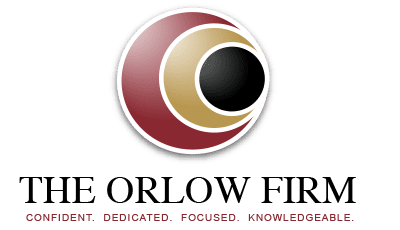
![New York City Lead Poisoning Statistics [2025] 3 nyc lead paint heatmap](https://orlowlaw.com/wp-content/uploads/2025/03/nyc-lead-paint-heatmap-300x171.png)
![New York City Lead Poisoning Statistics [2025] 4 New York City Lead Poisoning Statistics](https://orlowlaw.com/wp-content/uploads/2023/12/orlow-firm-nyc-personal-injury-attorneys-4-300x240.jpg)
![New York City Lead Poisoning Statistics [2025] 5 Cindy Cordova](https://orlowlaw.com/wp-content/uploads/2025/04/cindy-cordova-150x150.jpg)
